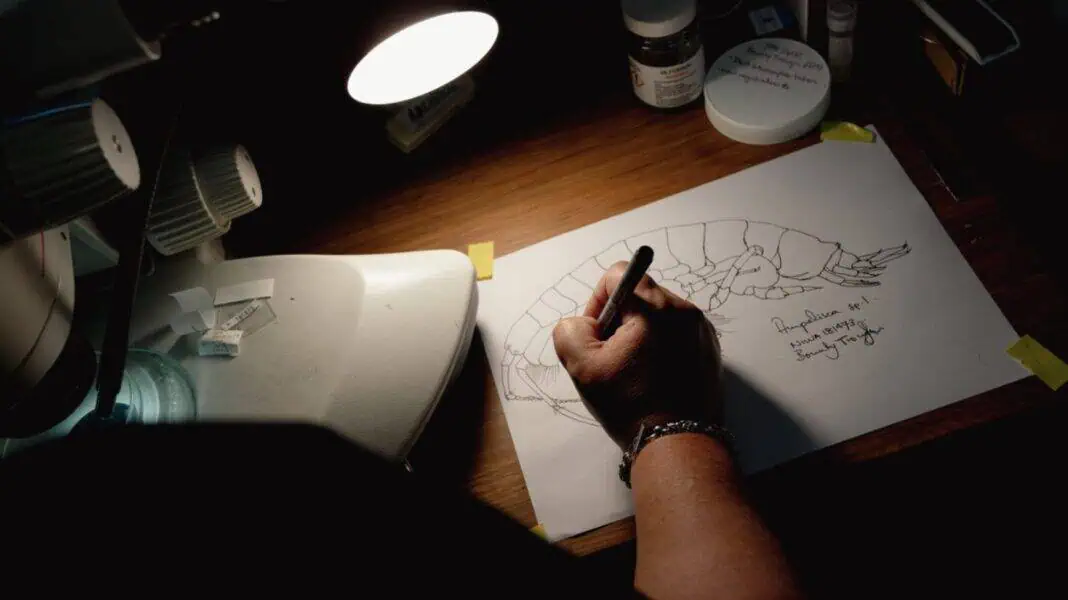How can art and science cohabit the same space and work together to help discover new species?
While today’s science has gone digital with many powerful computer-based tools, taxonomists have found that in some cases, the simple act of putting pencil to paper can paint a more vivid picture when it comes to discovering new species.
Several scientists from New Zealand’s Museums Victoria and the National Institute of Water and Atmospheric Research (NIWA) were interviewed about the role illustration plays in their work.
Discussing her work, Rachael Peart, a NIWA Marine Invertebrate Systematist, stated:
“I draw because I find I a way to see the detail at a clear and small level. I have been drawing amphipods for 30 years and so it seems to be the way my brain works. I also find if I draw the animal I understand it more, sometimes you can see the functional characteristics and how appendages can move and it explains how the organism can react to the environment.”
She added, explaining her fascination with amphipods:
“The huge diversity of amphipods is a key factor in my fascination with them. They fill every niche (except the air) – we have terrestrial, freshwater, marine amphipods. They are the MVP of the marine world. From the shallowest waters (and the beach) to the deepest trenches, amphipods are there, transporting carbon and cycling organic material, whether that is through being eaten or eating things themselves.”
While Jo Taylor from the Museum Victoria also explained her passion.
“Although being a notoriously challenging group to identify, phoxocephalid amphipods are beautiful animals to study and illustrate. Historic and recent collecting efforts indicate that phoxocephalid amphipods, long known to be abundant in marine shallows, especially in southern Australia, are also diverse in deeper waters with many new species awaiting description. I am interested to see from this workshop how many species from the Bounty Trough are previously “unknown” to science.”

